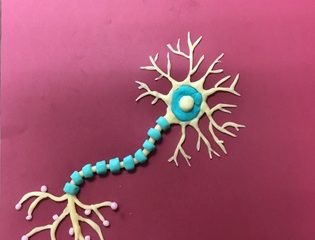Here his what I am reading today:
“”A fundamental aspect of the human experience is the desire to punish harmful acts, even when the victim is a perfect stranger. Equally important, however, is our ability to put the brakes on this impulse when we realize the harm was done unintentionally,” said Rene Marois, the Vanderbilt University professor of psychology who headed the research team. “This study helps us begin to elucidate the neural circuitry that permits this type of regulation.””
“”These animals ate fat and sugar, and did not gain weight, while their control littermates did,” said lead author Sabrina Diano, professor in the Department of Obstetrics, Gynecology & Reproductive Sciences at Yale School of Medicine. “We showed that the PPAR gamma receptor in neurons that produce POMC could control responses to a high-fat diet without resulting in obesity.””
“The research titled ‘Flexibility of the father’s brain’ was published in the Proceedings of the National Academy of Sciences.
‘Shifts in society and culture have led to increases in men’s involvement in the care of infants,’ writes researcher Dr Sarina Saturn of Oregon State University.”
“”Our results suggest that use of contemporary oral contraceptives [birth control pills] in the past year is associated with an increased breast cancer risk relative to never or former oral contraceptive use, and that this risk may vary by oral contraceptive formulation,” said Elisabeth F. Beaber, PhD, MPH, a staff scientist in the Public Health Sciences Division of Fred Hutchinson Cancer Research Center in Seattle, Washington.”
“During brain development, nerve fibers grow and extend to form brain circuits. This growth is guided by molecular cues (Fig. 1), but exactly how these cues guide axon extension has been unclear. Takuro Tojima and colleagues from the RIKEN Brain Science Institute have now uncovered the signaling pathways responsible for turning growing nerve fibers, or axons, toward or away from guidance cues.”
“introducing eNeuro: a new open access neuroscience journal committed to scientific excellence and innovation in publishing.
“Nadine Gogolla and her colleagues in the laboratory of Takao Hensch at Harvard University have now searched for common neural circuit alterations in mouse models of autism. They concentrated on the insular cortex, a brain structure that contributes to social, emotional and cognitive functions. ‘We wanted to know whether we can detect differences in the way the insular cortex processes information in healthy or autism-like mice’, says Nadine Gogolla, who was recently appointed Leader of a Research Group at the Max Planck Institute of Neurobiology.”




0 Comments